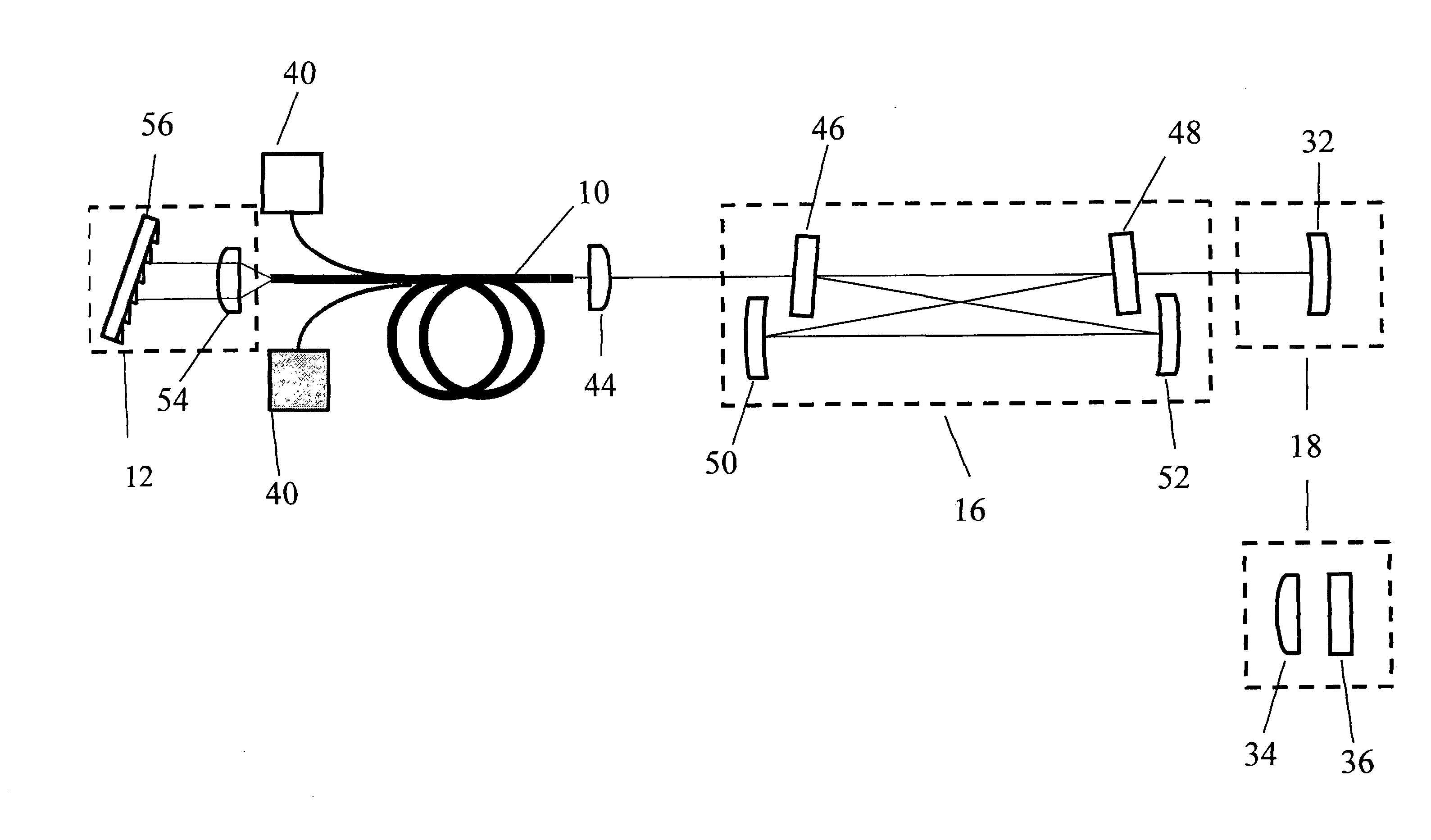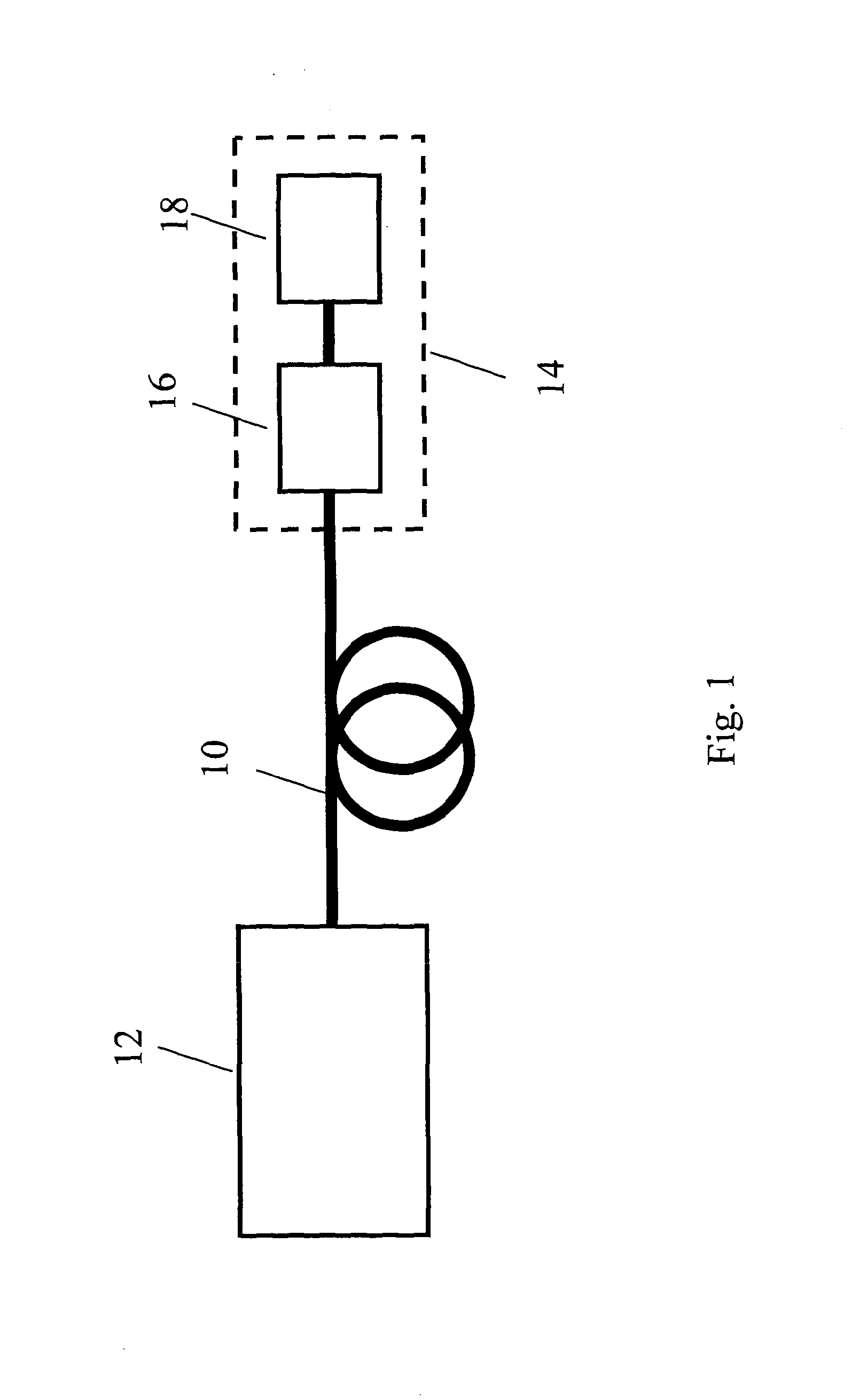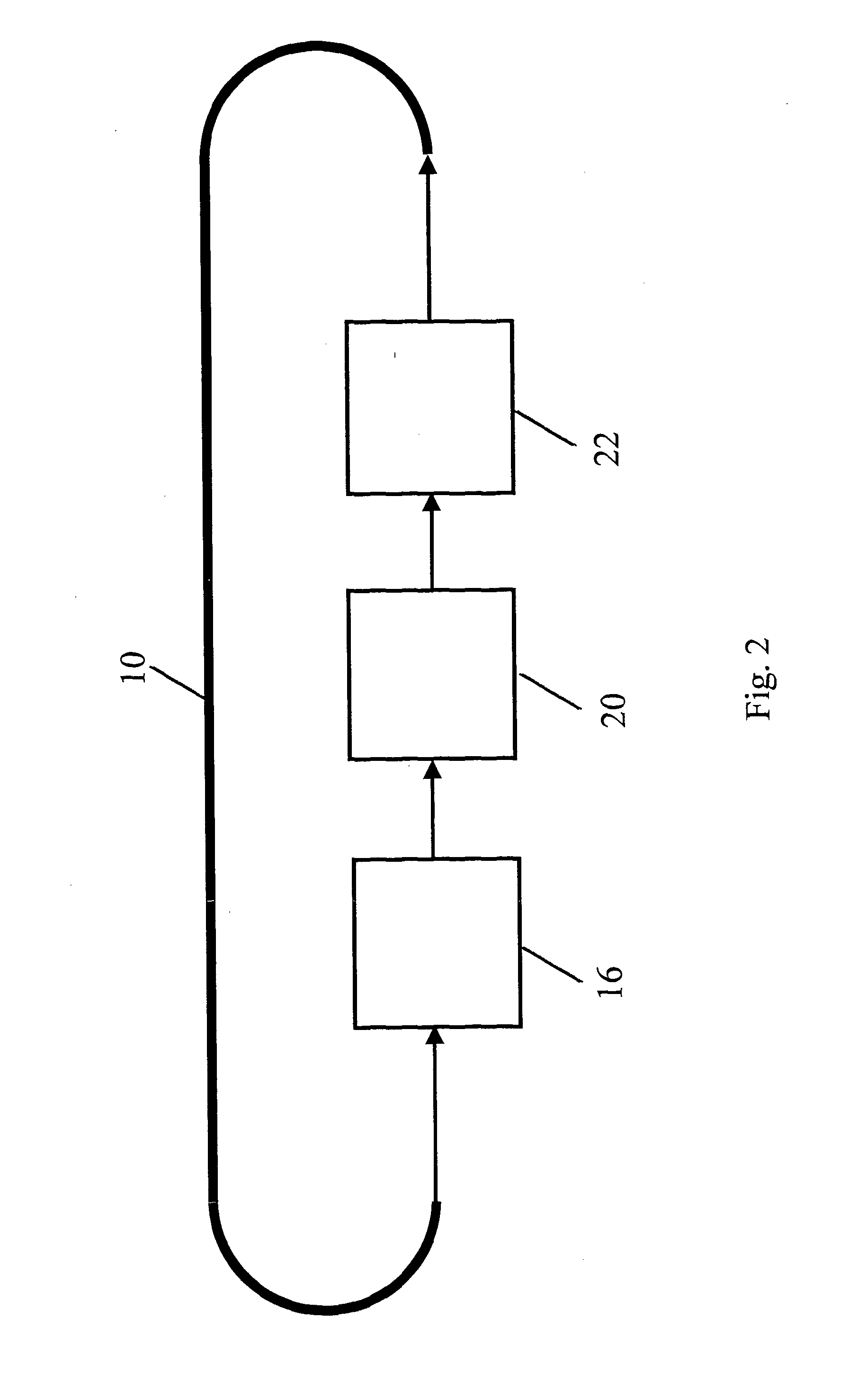Optical fiber lasers
a technology fiber optics, applied in the field of optical fiber lasers, can solve the problems of limited power levels of conventional solid-state lasers, general ineffectiveness, and limited cw power levels, and achieve efficient optical pumping, high intracavity power, and efficient nonlinear frequency conversion
- Summary
- Abstract
- Description
- Claims
- Application Information
AI Technical Summary
Benefits of technology
Problems solved by technology
Method used
Image
Examples
Embodiment Construction
[0081]FIG. 1 is a schematic block diagram of an optical fiber laser device according to a first embodiment which is based on a linear or standing-wave resonator configuration. A portion of optical fiber 10 is provided having a core and a cladding. The core is doped with suitable rare earth ions or bismuth to provide gain. A standing-wave resonator cavity is formed around the fiber 10 by first and second reflectors 12 and 18. The first reflector 12 is wavelength selective. The second reflector 18 is a mirror. The mirror 18 is part of an external feedback cavity 14 also comprising a resonant enhancement cavity 16 arranged within the resonator cavity formed by the first and second reflectors 12 and 18.
[0082]The fiber laser source can operate on axial modes defined by the effective length of whole cavity 12, 18 that lie within the emission spectrum of the active ions and the range of operating wavelengths defined by the wavelength-selective reflector 12. The cavity length will also incl...
PUM
 Login to View More
Login to View More Abstract
Description
Claims
Application Information
 Login to View More
Login to View More - R&D
- Intellectual Property
- Life Sciences
- Materials
- Tech Scout
- Unparalleled Data Quality
- Higher Quality Content
- 60% Fewer Hallucinations
Browse by: Latest US Patents, China's latest patents, Technical Efficacy Thesaurus, Application Domain, Technology Topic, Popular Technical Reports.
© 2025 PatSnap. All rights reserved.Legal|Privacy policy|Modern Slavery Act Transparency Statement|Sitemap|About US| Contact US: help@patsnap.com



